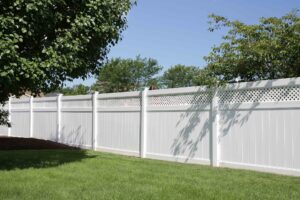Ranger Plumbing Company is your home’s circulatory system, carrying water and sewage to and from fixtures. It requires regular maintenance to avoid costly repairs and replacements.

Branding a plumbing company takes many different factors into account. Your logo, fonts, and colors should all be consistent with your brand identity.
New plumbing technology trends are positioning plumbers and industry businesses as innovative leaders, ready to offer cutting-edge solutions and peace of mind to their customers.
A plumbing company is required to be licensed in order to offer services. The licensing requirements vary by state. Some states require a plumber to pass an exam, while others require proof of experience and a background check. Some states also require a plumbing contractor to have liability insurance. In addition, a license may require that the plumber attend continuing education courses to keep up with industry standards.
The term “plumbing” means the installation, maintenance, extension and alteration of all piping within or adjacent to any structure, relating thereto to sanitary drainage systems, storm drainage facilities; venting systems; medical gas systems and public water supply systems and all other appurtenances thereof including heating ducts. This includes all materials and appliances used in connection with such systems.
SS 190-17 A person engaged in the business of plumbing and/or related mechanical trades, whether as an owner, partner or employee shall not engage in, carry on, conduct or hire out the services of any master plumber or other mechanical tradesperson unless such master or other mechanic is duly licensed and registered under this chapter. No permit or other evidence of registration or licensure under this chapter shall obviate the need to procure any permits for plumbing work otherwise required by local law, rule or regulation.
To become a licensed plumber, you must first submit an application to your county’s licensing board. The application typically requires a detailed description of your apprenticeship training and notarized copies of diplomas. You will also be asked to provide tax records and employment information.
Once you have submitted the application, you will be contacted about the exam schedule. Once you have passed the exam, you will receive your license in the mail.
The licensing process can take a long time, but the benefits are well worth it. Not only can you increase your income, but you can also enjoy the freedom of running your own business. You can also decide what kind of work you want to do, and who you want to work with. The demand for plumbing services is always increasing, so you can be confident that you will find plenty of clients.
Insurance
The plumbing industry has its own set of unique challenges, which is why proper insurance coverage is essential. Insurance protects plumbing professionals from the unforeseen financial and legal hiccups that can arise in the course of working on clients’ projects.
Depending on the state, certain types of business insurance are mandatory in order to operate a plumbing company. For example, some states require commercial general liability insurance to protect the business and its employees from the potential costs of lawsuits stemming from customer dissatisfaction or accidental property damage. It’s also a vital safeguard against the potentially costly consequences of employee accidents and injuries.
Insurance is not only necessary to comply with licensing requirements, but it can be beneficial for the overall profitability of a plumbing company. In addition to general liability and workers’ compensation, the following specialized policies are often recommended:
Tools and Equipment Coverage – This type of policy protects the plumbing contractor in case they need to pay for repairs or replacements for expensive tools that may be stolen from a truck or damaged on a job site. Commercial Auto Insurance – Plumbers are constantly transporting their tools, equipment, and inventory from one location to another, so a good commercial auto policy is essential. It’s important to discuss the specific needs of your business with an experienced insurance broker.
Workers’ Compensation – This is required by most states and covers medical expenses, lost wages, and death benefits for employees who get hurt while working. Experience modification factors will be considered when calculating premium rates for this type of insurance.
Business Owners Policy (BOP) – A BOP is an umbrella policy that typically bundles general liability and property insurance into a single policy. It is an excellent choice for small to mid-sized plumbing companies that want a comprehensive protection package at a reasonable price. The scope and nature of a plumbing company’s services will also influence its insurance costs. A smaller, more basic service company will likely have lower costs than a larger plumbing contracting firm that delves into complex installations and carries higher risks.
Equipment
Plumbing is a complex trade that requires specialized tools and equipment. Plumbers use hand tools such as wrenches and pliers for basic tasks, along with power tools like drills and pipe cutters. They also use specialized tools such as drain snakes and inspection cameras to diagnose problems. Plumbing tools can enhance the quality of work and improve overall productivity. In addition, efficient equipment plumbing tools ensure safety by minimizing the risk of injuries and accidents on the job.
In the plumbing business, the right tools are essential for completing jobs on time and to the highest standards. The right tools can make the difference between a simple fix and a costly repair. They can also help prevent leaks and malfunctions, saving clients money in the long run.
Some of the most important tools for plumbers include pipe freezing kits, specialized tools for bleed radiators, and clog removers. Plumbers must keep their toolboxes fully stocked to ensure they have the correct tools for every job. These tools can be purchased from online retailers or local hardware stores.
Using the right tools can also reduce labor costs and increase productivity. By minimizing downtime and improving work efficiency, plumbers can complete more projects in less time, making them more profitable. This can also help them retain customers and gain new ones.
The proper tools can help streamline tasks and reduce the time needed for repairs and installations. They can also help improve accuracy and precision, resulting in higher-quality workmanship. High-quality plumbing tools also provide a better return on investment and can increase the lifetime of a plumbing system.
A good plumber is dedicated to delivering high-quality results for their clients. They follow industry standards, adhere to strict safety regulations, and use advanced tools to guarantee quality workmanship. As a result, they can deliver prompt, reliable service that can last for years to come. This helps build trust with their clients and fosters a positive reputation in the industry.
As a result, hiring qualified plumbers is essential for running a successful plumbing company. Those looking to become a plumber should consider taking a vocational school course to learn the necessary skills and tools for the trade. Those with a background in construction, electrical work, or mechanical engineering can also benefit from a plumbing career. In addition to learning the basics of plumbing, aspiring plumbers should also consider continuing education courses and professional development opportunities. These programs can teach them the latest tools and techniques in the plumbing industry, as well as how to best manage their teams.
Phone Answering
If a homeowner experiences a sudden plumbing issue, such as a clogged toilet or water leak, they will likely want to contact the plumber immediately. This can happen at any time of the day or night, so having a reliable answering service is important.
A professional answering service will be able to respond to calls with the right tone and information. They will be able to answer questions about services, schedules, and pricing. They can also schedule service appointments and dispatch technicians to the correct location. They can even send out appointment reminders via text messages, which help prevent missed appointments.
As a plumbing business owner, you may not always have the time to answer every phone call. If you are in a meeting with a client or working on a plumbing repair, missing a call can be costly. Oftentimes, customers will not call back if they cannot reach you, so missing a call can result in lost business. A professional answering service will be available to take your phone calls 24/7, so you can focus on your work and growing your plumbing business.
Whether it is 3am and a panicked homeowner watches water gush out of her broken pipe, or a potential customer calling about your HVAC installation promo from an email, effective customer service comes down to adaptability. If you are not able to meet the needs of your customers in real-time, they will find another company that can.
Your answering service must be able to handle the high volume of phone calls that come in at any time. It can be difficult to keep up with the demand if you are not able to hire additional employees to work during peak times. This is where a professional, outsourced answering service can be a lifesaver for your plumbing or HVAC company.
A professional, outsourced answering service can be staffed by skilled agents who are trained to understand your industry. They can also be trained to know when to refer the caller to your technician or when they are able to provide advice over the phone. Additionally, they can handle scheduling issues and dispatch technicians to the appropriate location based on geodata.



